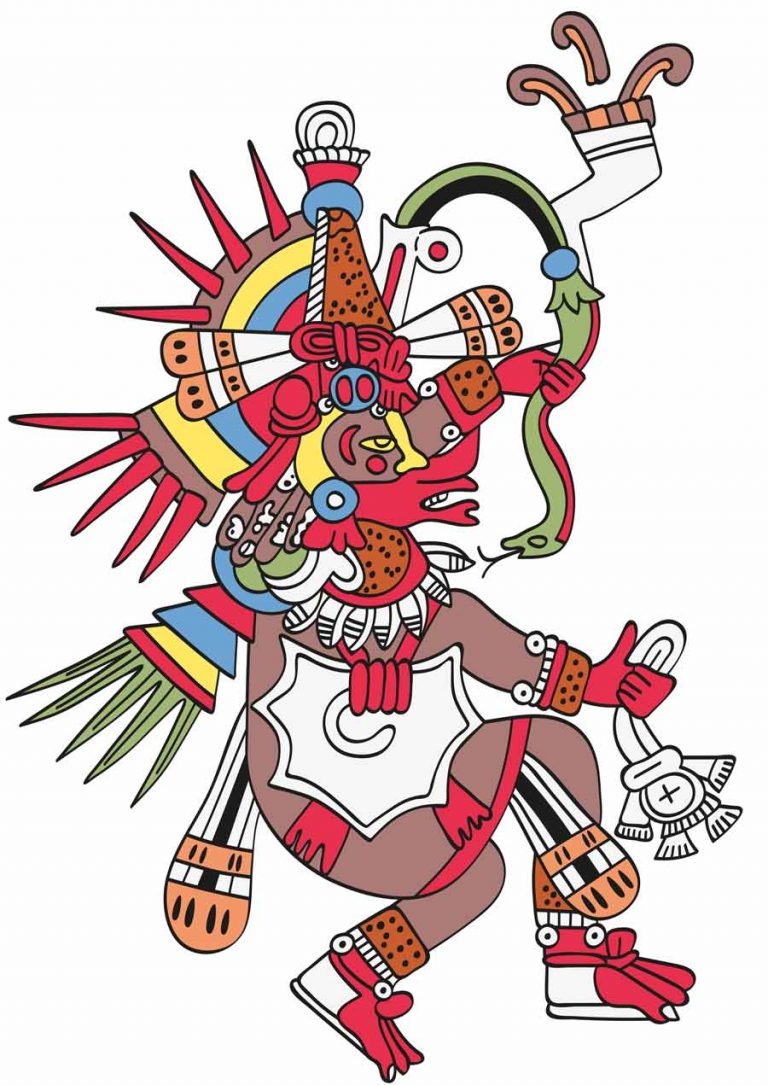What if the ancient mythologies of indigenous cultures could hold profound connections to the spiritual truths embraced by the Bahá’í Faith? One compelling case study is Quetzalcoatl, the feathered serpent deity of Mesoamerican traditions, whose narratives may intertwine with Bahá’í principles. Entering this discourse invites one to ponder: could the symbolism and teachings represented by Quetzalcoatl illuminate Bahá’í perspectives on unity, truth, and the shared heritage of humankind?
In exploring this connection, it is crucial to first examine who Quetzalcoatl is within Aztec and other indigenous mythologies. Foremost, Quetzalcoatl is often depicted as a creator deity and a cultural hero, symbolizing the duality of the material and spiritual realms. Traditionally, he is revered as a bringer of knowledge, agriculture, and civilization, embodying qualities such as wisdom, foresight, and benevolence. These attributes resonate with the central tenets of the Bahá’í Faith, which asserts the necessity of spiritual guidance and moral development in the pursuit of a just society.
To fully appreciate the similarities and distinctions between Bahá’í teachings and the myth of Quetzalcoatl, juxtaposing core concepts is insightful. One of the fundamental concepts in Bahá’í philosophy is the oneness of humanity, which emphasizes that all religions and cultures contribute uniquely to the collective understanding of spiritual truth. This idea closely parallels the indigenous belief systems, where diverse myths and deities such as Quetzalcoatl serve a common purpose of weaving a comprehensive tapestry of wisdom. Both paradigms insist on the interconnectedness of all people across time and space.
In the same vein, the Bahá’í Faith champions the idea of progressive revelation, which posits that religious truth evolves over time through various manifestations, including prophets and seers. Quetzalcoatl, existing within the collective consciousness of pre-Columbian societies, serves as a significant cultural manifestation of spiritual ideals. His narrative, much like those of Jesus, Muhammad, and other prophets in the Bahá’í tradition, contains layers of meaning that can inspire contemporary seekers of truth. Thus, consider the question: can ancient symbols like Quetzalcoatl be reinterpreted to promote harmony among differing faiths?
The transformation of spiritual perception is not limited to ancient civilizations but is echoed in contemporary Bahá’í engagement with indigenous cultures. The Bahá’í community actively seeks to learn from the wisdom embedded within indigenous traditions. This engagement fosters a dialogue that encourages mutual respect, understanding, and learning. Yet, this interaction is not without challenges. The reconciliatory approach demands sensitivity to the intricacies of indigenous beliefs and practices. Respecting the sanctity of these traditions while integrating them into a broader Bahá’í context raises complex questions about cultural appropriation and the integrity of original teachings.
Moreover, the Bahá’í view on unity and diversity can serve as a framework for interpreting the Quetzalcoatl narrative. The teachings of Bahá’u’lláh glorify the richness found in the multiplicity of cultures and religions, suggesting that Quetzalcoatl’s myth is not merely a relic of the past but also a living commentary on present-day spiritual evolution. In this light, Quetzalcoatl’s embodiment of nature, humanity, and divinity can provoke us to reassess the modern relationship with the environment, advocating for a holistic understanding of our ecological responsibilities.
As one ventures deeper into the symbolic nature of Quetzalcoatl and the teachings of the Bahá’í Faith, an intriguing aspect arises: the convergence of scientific understanding and spiritual insight. Quetzalcoatl is associated with concepts like maize and the life cycle, which indicate a deep respect for life interconnectedness. The Bahá’í Faith similarly underscores the relationship between science and religion, advocating for a synthesis that transcends the conventional dichotomy observed in contemporary discourse. What if our exploration of indigenous narratives could yield revolutionary insights into pressing global dilemmas, such as the climate crisis?
The path forward suggests that the interplay between Bahá’í teachings and the legacy of Quetzalcoatl may catalyze movements toward social justice, environmental stewardship, and intercultural dialogue. Combined, these teachings provide a robust framework for addressing contemporary challenges. Ultimately, both teachings proclaim the necessity of compassion, collaboration, and a comprehensive understanding of truth, urging humanity to embrace a future inspired by divine guidance.
Thus, the rich complexities surrounding Quetzalcoatl serve as a fertile ground for dialogue, spiritual exploration, and community engagement. Embracing the essence of such narratives reminds us of our shared journey towards enlightenment and unity. It is through this lens that we can appreciate our diverse spiritual heritages while collectively striving towards a world characterized by peace, harmony, and interconnectedness. The challenge lies not only in accepting this multifaceted heritage but also in actively weaving it into the fabric of our daily lives and communities.
In conclusion, the teachings surrounding Quetzalcoatl offer profound insights that are undeniably relevant within the Bahá’í framework. They encourage us to reflect on the depth of spiritual truths manifested through various cultures, inspiring a collective pursuit of wisdom that transcends geographical and temporal boundaries. Whether in myth or doctrine, the call for unity and understanding remains an unwavering pursuit in the quest for spiritual truth.
